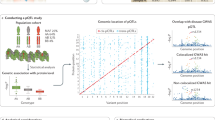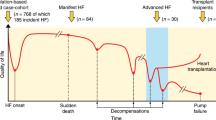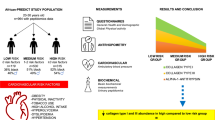Abstract
Proteomics, the study of the proteins making up the proteome, has emerged in recent years as an important tool in several different fields of medical research for early disease detection, for assessment of response to treatment and for unravelling underlying pathophysiological mechanisms. Although the majority of patients with hypertension are treated in a similar manner, the causes underlying the condition are diverse, and often poorly understood. Genetic studies have implicated several different candidate genes, but it may be that examination of the ‘downstream’ products of genes, the proteins, will help to improve understanding of the link between the environmental and genetic effects that contribute towards development of hypertension. Proteomic studies can be performed quickly and reliably on several different sample types including plasma and urine, requiring minimal pre-test preparation. In this review, we will compare the different analytical platforms and technical issues involved in proteomic analysis. We will discuss existing studies of proteomics in hypertension, as well as related conditions such as renal disease, pre-eclampsia and coronary artery disease. We will also explore potential future applications of proteomics-based research, which may ultimately lead to improved population screening, monitoring of therapy and early detection of target organ damage.
This is a preview of subscription content, access via your institution
Access options
Subscribe to this journal
Receive 12 digital issues and online access to articles
$119.00 per year
only $9.92 per issue
Buy this article
- Purchase on Springer Link
- Instant access to full article PDF
Prices may be subject to local taxes which are calculated during checkout

Similar content being viewed by others
References
Delles C, McBride MW, Graham D, Padmanabhan S, Dominiczak AF . Genetics of hypertension: from experimental animals to humans. Biochim Biophys Acta 2010; 1802: 1299–1308.
Ginsburg GS, Haga SB . Translating genomic biomarkers into clinically useful diagnostics. Expert Rev Mol Diagn 2006; 6: 179–191.
Kolch W, Neususs C, Pelzing M, Mischak H . Capillary electrophoresis-mass spectrometry as a powerful tool in clinical diagnosis and biomarker discovery. Mass Spectrom Rev 2005; 24: 959–977.
Fliser D, Novak J, Thongboonkerd V, Argiles A, Jankowski V, Girolami MA et al. Advances in urinary proteome analysis and biomarker discovery. J Am Soc Nephrol 2007; 18: 1057–1071.
Boumpas DT, Kuroiwa T . Urine proteomics for the early diagnosis of acute glomerulonephritis: has the time come? Arthritis Rheum 2007; 56: 705–709.
Araki Y, Nonaka D, Tajima A, Maruyama M, Nitto T, Ishikawa H et al. Quantitative peptidomic analysis by a newly developed one-step direct transfer technology without depletion of major blood proteins: its potential utility for monitoring of pathophysiological status in pregnancy-induced hypertension. Proteomics 2011; 11: 2727–2737.
Patterson SD, Aebersold R . Mass spectrometric approaches for the identification of gel-separated proteins. Electrophoresis 1995; 16: 1791–1814.
Karp NA, McCormick PS, Russell MR, Lilley KS . Experimental and statistical considerations to avoid false conclusions in proteomics studies using differential in-gel electrophoresis. Mol Cell Proteomics 2007; 6: 1354–1364.
Yates JR, Ruse CI, Nakorchevsky A . Proteomics by mass spectrometry: approaches, advances, and applications. Annu Rev Biomed Eng 2009; 11: 49–79.
Baggerly KA, Morris JS, Edmonson SR, Coombes KR . Signal in noise: evaluating reported reproducibility of serum proteomic tests for ovarian cancer. J Natl Cancer Inst 2005; 97: 307–309.
Schmitt-Kopplin P, Frommberger M . Capillary electrophoresis-mass spectrometry: 15 years of developments and applications. Electrophoresis 2003; 24: 3837–3867.
Jantos-Siwy J, Schiffer E, Brand K, Schumann G, Rossing K, Delles C et al. Quantitative urinary proteome analysis for biomarker evaluation in chronic kidney disease. J Proteome Res 2009; 8: 268–281.
Schiffer E, Mischak H, Novak J . High resolution proteome/peptidome analysis of body fluids by capillary electrophoresis coupled with MS. Proteomics 2006; 6: 5615–5627.
Lange V, Picotti P, Domon B, Aebersold R . Selected reaction monitoring for quantitative proteomics: a tutorial. Mol Syst Biol 2008; 4: 222.
Kiyonami R, Schoen A, Prakash A, Peterman S, Zabrouskov V, Picotti P et al. Increased selectivity, analytical precision, and throughput in targeted proteomics. Mol Cell Proteomics 2011; 10: M110.
Chandra H, Reddy PJ, Srivastava S . Protein microarrays and novel detection platforms. Expert Rev Proteomics 2011; 8: 61–79.
Thongboonkerd V, Gozal E, Sachleben LR, Arthur JM, Pierce WM, Cai J et al. Proteomic analysis reveals alterations in the renal kallikrein pathway during hypoxia-induced hypertension. J Biol Chem 2002; 277: 34708–34716.
Jin X, Xia L, Wang LS, Shi JZ, Zheng Y, Chen WL et al. Differential protein expression in hypertrophic heart with and without hypertension in spontaneously hypertensive rats. Proteomics 2006; 6: 1948–1956.
Lee CK, Han JS, Won KJ, Jung SH, Park HJ, Lee HM et al. Diminished expression of dihydropteridine reductase is a potent biomarker for hypertensive vessels. Proteomics 2009; 9: 4851–4858.
Delbosc S, Haloui M, Louedec L, Dupuis M, Cubizolles M, Podust VN et al. Proteomic analysis permits the identification of new biomarkers of arterial wall remodeling in hypertension. Mol Med 2008; 14: 383–394.
Jing L, Parker CE, Seo D, Hines MW, Dicheva N, Yu Y et al. Discovery of biomarker candidates for coronary artery disease from an APOE-knock out mouse model using iTRAQ-based multiplex quantitative proteomics. Proteomics 2011; 11: 2763–2776.
Graham D, McBride MW, Brain NJ, Dominiczak AF . Congenic/consomic models of hypertension. Methods Mol Med 2005; 108: 3–15.
Zürbig P, Decramer S, Dakna M, Jantos J, Good DM, Coon JJ et al. The human urinary proteome reveals high similarity between kidney aging and chronic kidney disease. Proteomics 2009; 9: 2108–2117.
Jiang H, Schiffer E, Song Z, Wang J, Zurbig P, Thedieck K et al. Proteins induced by telomere dysfunction and DNA damage represent biomarkers of human aging and disease. Proc Natl Acad Sci USA 2008; 105: 11299–11304.
Zimmerli LU, Schiffer E, Zurbig P, Good DM, Kellmann M, Mouls L et al. Urinary proteomic biomarkers in coronary artery disease. Mol Cell Proteomics 2008; 7: 290–298.
von zur Mühlen C, Schiffer E, Zuerbig P, Kellmann M, Brasse M, Meert N et al. Evaluation of urine proteome pattern analysis for its potential to reflect coronary artery atherosclerosis in symptomatic patients. J Proteome Res 2009; 8: 335–345.
Bramham K, Mistry HD, Poston L, Chappell LC, Thompson AJ . The non-invasive biopsy—will urinary proteomics make the renal tissue biopsy redundant? Q J Med 2009; 102: 523–538.
Mullen W, Delles C, Mischak H . Urinary proteomics in the assessment of chronic kidney disease. Curr Opin Nephrol Hypertens 2011; 20 (6): 654–661.
Kiga C, Sakurai H, Goto H, Hayashi K, Shimada Y, Saiki I . Proteomic identification of haptoglobin as a stroke plasma biomarker in spontaneously hypertensive stroke-prone rats. Life Sci 2008; 83: 625–631.
Cuadrado E, Rosell A, Colome N, Hernandez-Guillamon M, Garcia-Berrocoso T, Ribo M et al. The proteome of human brain after ischemic stroke. J Neuropathol Exp Neurol 2010; 69: 1105–1115.
Montaner J, Mendioroz M, Delgado P, Garcia-Berrocoso T, Giralt D, Merino C et al. Differentiating ischemic from hemorrhagic stroke using plasma biomarkers: the S100B/RAGE pathway. J Proteomics 2012 (http://dx.doi.org/10.1016/j.jprot.2012.01.033).
Dayon L, Turck N, Garci-Berrocoso T, Walter N, Burkhard PR, Vilalta A et al. Brain extracellular fluid protein changes in acute stroke patients. J Proteome Res 2011; 10: 1043–1051.
Carty DM, Delles C, Dominiczak AF . Preeclampsia and future maternal health. J Hypertens 2010; 28: 1349–1355.
Redman CW, Sargent IL . Placental stress and pre-eclampsia: a revised view. Placenta 2009; 30 (Suppl A): S38–S42.
Buhimschi IA, Zhao G, Funai EF, Harris N, Sasson IE, Bernstein IM et al. Proteomic profiling of urine identifies specific fragments of SERPINA1 and albumin as biomarkers of preeclampsia. Am J Obstet Gynecol 2008; 199: e1–e16.
Carty DM, Siwy J, Brennand JE, Zurbig P, Mullen W, Franke J et al. Urinary proteomics for prediction of preeclampsia. Hypertension 2011; 57 (3): 561–569.
Watanabe H, Hamada H, Yamada N, Sohda S, Yamakawa-Kobayashi K, Yoshikawa H et al. Proteome analysis reveals elevated serum levels of clusterin in patients with preeclampsia. Proteomics 2004; 4: 537–543.
Wang CC, Yim KW, Poon TCW, Choy KW, Chu CY, Lui WT et al. Innate immune response by ficolin binding in apoptotic placenta is associated with the clinical syndrome of preeclampsia. Clin Chem 2007; 53: 42–52.
Blumenstein M, McMaster MT, Black MA, Wu S, Prakash R, Cooney J et al. A proteomic approach identifies early pregnancy biomarkers for preeclampsia: novel linkages between a predisposition to preeclampsia and cardiovascular disease. Proteomics 2009; 9: 2929–2945.
Mischak H, Ioannidis JP, Argiles A, Attwood TK, Bongcam-Rudloff E, Broenstrup M et al. Implementation of proteomic biomarkers: making it work. Eur J Clin Invest, (e-pub ahead of print 27 March 2012; doi: 10.1111/j.1365-2362.2012.02674.x.).
Acknowledgements
This work has been supported by the European Commission’s 7th Framework Programmes EU-MASCARA, PRIORITY and EURATRANS.
Author information
Authors and Affiliations
Corresponding author
Ethics declarations
Competing interests
DMC and CD report no conflict of interest. ES is employee of Mosaiques Diagnostics GmbH, who develop proteomics-based tests for clinical applications.
Rights and permissions
About this article
Cite this article
Carty, D., Schiffer, E. & Delles, C. Proteomics in hypertension. J Hum Hypertens 27, 211–216 (2013). https://doi.org/10.1038/jhh.2012.30
Received:
Revised:
Accepted:
Published:
Issue Date:
DOI: https://doi.org/10.1038/jhh.2012.30
Keywords
This article is cited by
-
Pre-emptive medicine for hypertension and its prospects
Hypertension Research (2019)
-
Use of Biomarkers in the Evaluation and Treatment of Hypertensive Patients
Current Hypertension Reports (2016)



